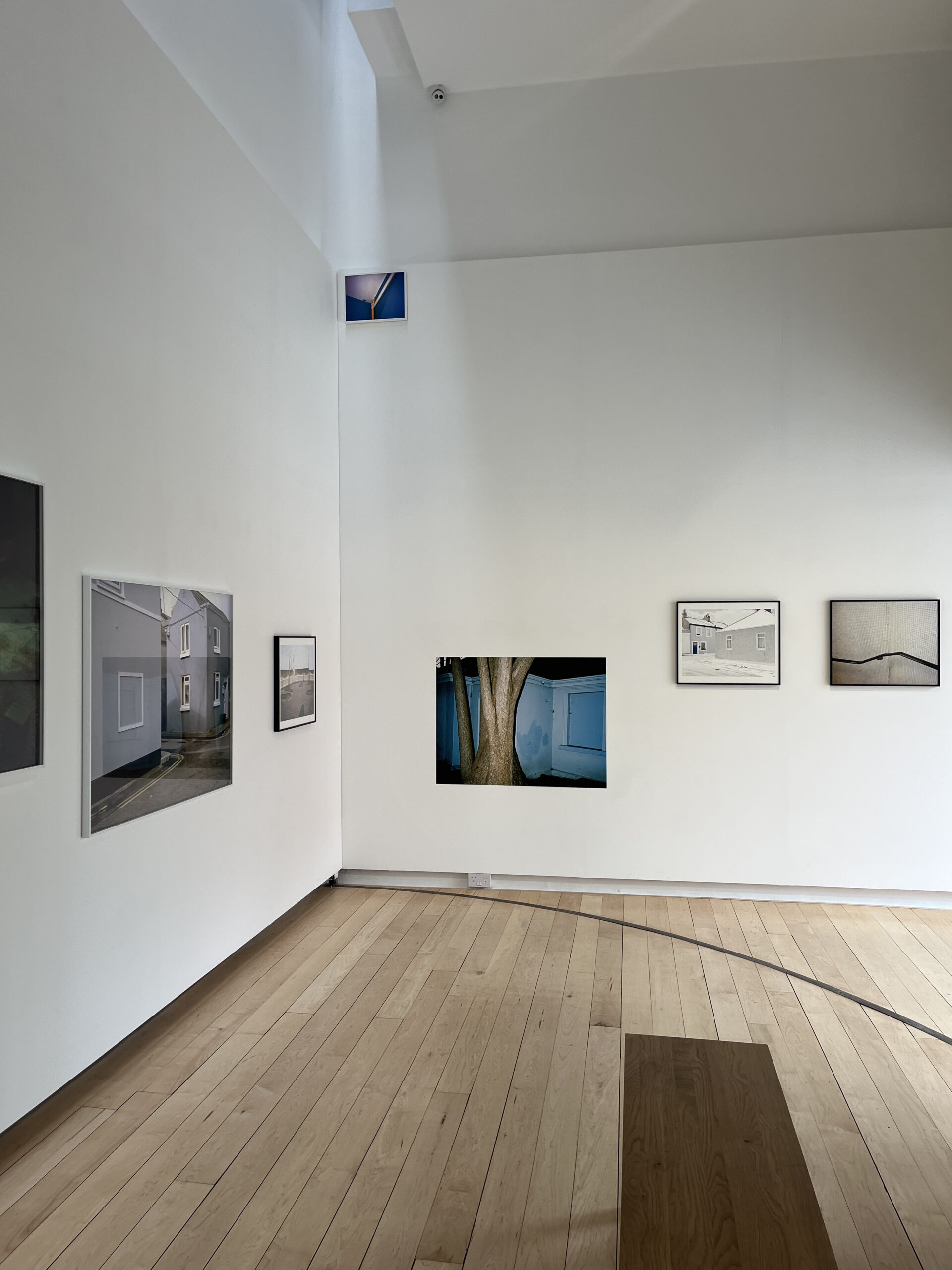
It’s my first time visiting Photo Museum Ireland, and I’m lost. Tucked up in one of the less trafficked nooks of Temple Bar, it shares a square with both the National Photographic Archive and the whimsical old entrance of the Irish Film Institute. In essence, it’s exactly where you would expect to find it – if only you knew where to look. As I venture inside and get my first glimpse of Shane Lynam’s Pebbledash Wonderland, this is a sentiment that sticks with me.
Lynam’s photographs are spread sparsely across the museum. Stumbling upstairs, I find myself in a blank white room. Its wooden floor is etched with a single semicircular line, and for a moment I fancy myself to be standing on a basketball court. Some photos are framed in black or white trim, others are printed onto thin veneered sheets. At the back of the first floor, hidden somewhat confusingly behind a curtain, the intrepid visitor finds a carousel of black and white images, soundtracked by nothing but their own breathing. The cumulative impression is that of walking through the door of a haberdashers – the most apt metaphor for Dublin City I have found to date.
Though the presentation of Lynam’s work is indeed assorted, it can in no way be accused of randomness. Photographs are placed strategically around the room, mimicking the actual spaces they occupy in an urban environment. An image of a plastic drainpipe claims the uppermost corner of the gallery, while a heap of bricks consumes its diagonal counterpart. I return with fondness to the image of the haberdashers, only here Lynam exchanges buttons for bricks, thread for power lines, and zippers for yellowed road markings that curve out of sight.
The exhibition’s introductory statement expounds this idea, stating ‘formed by the repeated, linked actions of walking and photographing, the work reflects Lynam’s dual position as observer and participant.’ Any visitor of Pebbledash Wonderland will find themselves occupying a similar duality, as it is notably peculiar to attend an exhibition in the very city which it documents. In this sense, I’m reminded of last year’s November riots. Inside the chamber of the Philosophical Society, students debated the motion, ‘This Is As Good As It Gets.’ Outside the chamber, the streets were inundated with looters and riot police, helicopters hovering overhead. Pebbledash Wonderland captures this dichotomy visually. It showcases a city in crisp, static imagery, while outside the windows that city plays out with an energy that couldn’t be further from stasis.
Passing the museum’s gift shop, the charm of consumerism is too great to deter. I fish a two euro coin from the pocket of my jeans and buy a postcard emblazoned with a photograph of Jim Morrison’s grave. An image of Patti Smith in Paris emerges. Dashing back into the pebbled Dublin streets, I recall a quote from her memoir, Just Kids, ‘There were days, rainy gray days, when the streets of Brooklyn were worthy of a photograph, every window the lens of a Leica, the view grainy and immobile.’
Pebbledash Wonderland ran in Photo Museum Ireland from August 24th to October 12th.






